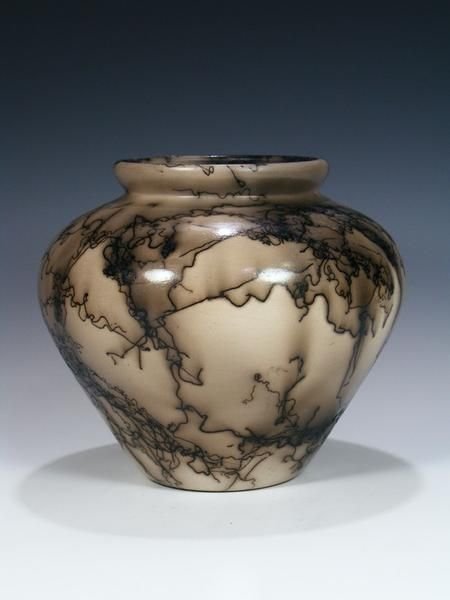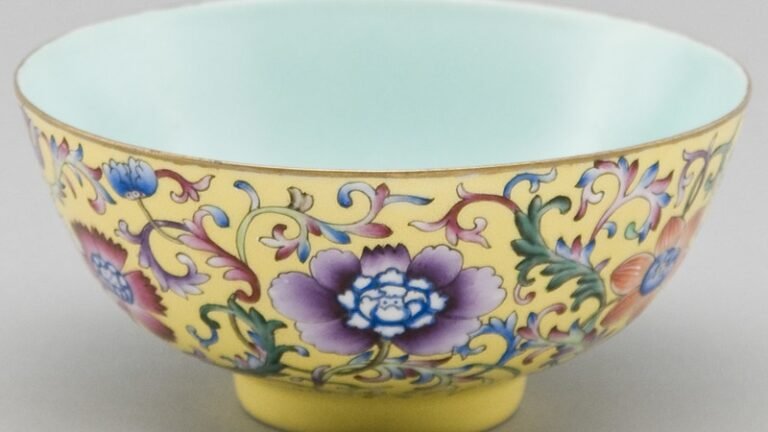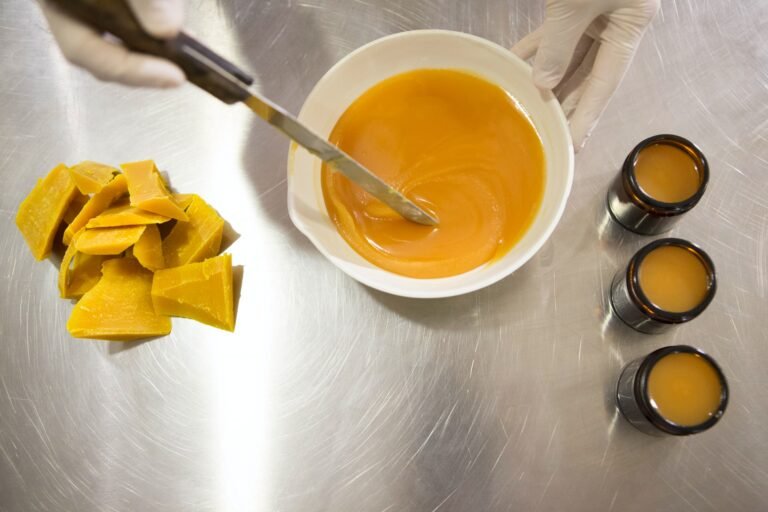Can You Use Human Hair for Raku Pottery? (Important Facts)
Raku Pottery is a Japanese method that employs a low-firing process in which the newly formed pot is placed into a kiln and then plunged into the water to cool it down. It originates back to the mid-1500s when Zen Buddhists used the method for their tea ceremonies. Nowadays, most cultures practice raku pottery in their own way and with different materials.
Raku was also a significant marking point in Japanese ceramics as it was the first pottery to use a seal mark.
Horsehair Raku involves decorating heated clay pottery with horsehair. When it burns it onto the pottery, it leaves a pattern with an intricate design. Potters have also tried using human hairs but, does this work, is it recommended, and can you actually use human hair for raku pottery?
You can use any carbon source, including human hair, that has an oil content. Although human hair may be finer compared to horsehair, it will combust. Burning on the surface of the pot should create lines and a smoky pattern.
Raku pottery is dynamic; it changes throughout time but, there are some aspects of the practice that remain consistent. By the 1950s, Raku grew popular in the US, resulting in more adaptations. For example, western-style raku involves removing the pot from the kiln when it’s red hot and placing it into combustible materials.
Potters still value the technique for its simplistic and unpredictable beauty. The process engages all the four elements; earth, fire, air, and water, and it is known for its vigorous and bold nature. Keep on reading if you want to find out more about the history of horse hair pottery and its process.
Does Hair Burn off in a Kiln?
The Raku technique involves forming the piece of pottery and polishing it to smooth the surface, also known as burnishing. A smoother, unglazed surface will enhance the design and make it more distinct. The potter then fires it between 1300ºF and 1800ºF (700 ºC – 1000 ºC) in a raku kiln and then removes it after it reaches the right temperature.
However, the technique does not involve burning the hair directly in a kiln. After the first firing increment, the potter places the hair onto the heated ware, and they are burned into it before the potter can place the pot back to finish the firing process. Although, if the temperatures are too hot, it risks burning off the carbon imprint.
What Is A Kiln?
A kiln is like an oven, and it has been used for thousands of years to harden and dry clay into pottery. There are two types of kilns; ones that use fire similar to a furnace and ones that resemble insulated heat chambers. Many people consider Raku firing to be a dangerous process; the temperature changes often cause the pottery to crack and explode.
However, you need a kiln to bring the pottery to a high enough temperature to combust the hairs. Air drying is not an option for this method of pottery, also because the clay would eventually crack and break apart. If you do not have a kiln or you are not comfortable with using one, it is best to find a pottery workshop where you can get assistance.
Who Invented Horsehair Pottery?
Raku pottery today takes inspiration from the ceremonial tea practices of Zen Buddhists. But the history of horsehair pottery is not as well known. Many believe that ancient tribes, such as the Navajo, used this method to honor their horses.
Hence, horsehair Raku pottery is valued as an ancient art form and for its authenticity. Although, legend states that the art form started when a Native American Pueblo woman removed her pot from the kiln, and the wind blew her hair onto it. Strands of her hair burned into the ware; leaving a carbon imprint. She then decided to replicate it with horsehair when she saw the fascinating design.
Today, the Navajo nation relies on its craft to earn revenue, and their horsehair pottery and ceramics have become widely popular with art enthusiasts. Most of their Raku pieces are black and white, but they occasionally have striking colors like turquoise. They also sell at a high rate because Raku uses one of the most difficult firing methods, and it may take a few attempts to achieve a good result before mastering it.

How Do You Use Horsehair on Pottery?
Horsehair decorates pottery, creating irregular lines and designs on heated ware. Usually, hair from the horse’s mane leaves a thinner line while its tail hairs leave a thicker imprint. The darker lines come from the hair combusting directly onto the pot, and the smoke creates the lighter grey patterns. You can place the hair however you want to form a unique design each time.
The hairs curl and loop around as they infuse into the piece, and potters usually use low-fired clay for this type of pottery and other materials such as feathers, leaves, straw, and even sawdust. While any type of clay works well in the process, you can still buy raku clay. But since the clay is porous, it will absorb water which will weaken its form.
Typically, grogged stoneware clay is ideal for Raku pottery; it is more resistant to thermal shocks and decreases shrinkage. But you can also obtain specially-made Raku clays that contain kyanite.
Is It Waterproof and Food Safe?
Since the clay readily absorbs water, using it to hold water will eventually degrade its form. So even though Raku firing is one of the most natural pottery techniques, ceramics are more decorative than functional. They are also not food safe because of the glaze and the cracks that may harbor bacteria.
How Do You Fire Horsehair in Pottery?
The whole process is very rapid; lasting about one to two hours, in comparison to regular 24-hour firings. After the pottery heats up in a kiln, the potter drapes the hair along with it. They combust due to the high temperature. An accurate temperature is needed to enhance the carbon markings; lower temperatures do not combust the hairs, while too high temperatures will burn off the markings.
Keep in mind that you cannot refire Raku pottery; since they need a lack of oxygen to develop, refiring will reverse the reduction firing you did in the first place.
How to Protect Your Raku Pottery
You might want to protect your Raku pieces for several reasons. Many potters note how many raku glazes lose their vibrancy over time due to exposure to the air. Typically, three coats of glaze are applied, so potters suggest using a sealant on top of the glaze to prevent water from penetrating and adding a protective layer against oxygen.
Glazes can have different colors, but Japanese Raku Pottery often has a red due that comes from the clay itself. You can also use wax or oil to protect your pieces and the glaze from chipping away. Plus these methods also add an attractive sheen to the ceramics.
Why Not Horse Hair?
So if horsehair is so effective, why would you not want to use it? Well, horsehair is not as readily available to everyone, and when it is, it is expensive because you cannot take large amounts from one animal. Horses are not slaughtered for their hair since you can obtain it from live ones, but some people may not be comfortable with that either, which is why their hair may be a better option.
Using human hair may also be a good option if you want to make a memorable piece and personalize it. The term Raku represents freedom, humility, and naturalness, qualities the unpredictable practice embodies in itself.
Hair Raku pottery is the perfect method to bring about new designs and experiment with your technique. Although some people argue that human hairs are too fine for this method, it is definitely worth giving it a try.







